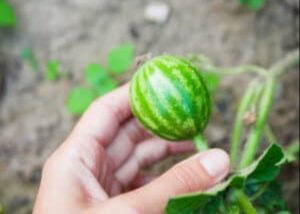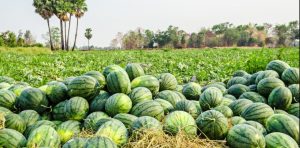Perhaps your neighborhood grocery store might be running out of your favorite watermelons before you can grab some or maybe they don’t quite suit your taste or you just want to grow watermelons as a pastime, and you have no idea whatsoever on what to do exactly. Little worries, you are reading just the piece of literature to answer all your questions. So, let’s get to it, shall we?
WHAT KIND OF SOIL TO USE?
First you would want to pick a parch or piece of land that contains loamy-partly sandy-soil with clay content to the minimum. That is the best kind of soil your watermelons would work well with. The soil also has to be well drained and more importantly warm. Make sure of that. Picking the right site can make all the difference in the growing of any crop especially your watermelons.
WHEN SHOULD I PLANT MY WATERMELONS?
You should make sure to check weather forecast and be sure that it’s a suitable time before you start planting. As has been brought to your knowledge, you’ll need the soil really warm and we can’t definitely achieve a warm soil while battling cold, can we? You can look up the forecasts on the Internet with your phone and you’ll get a pretty straight forward answer.
PLANTING PROPER.

- Just for precautionary purpose it’s advised to amend your soil with a bit of manure/compost. Watermelons are plants that really need all the nutrients they can get
- Also have in mind that watermelons have vines and of course would need a lot of space to grow properly. So, when putting your seeds in the ground give at least 20 square feet space allocation to each plant could be more if you have the space.
- When putting your seeds in the ground you don’t want to put them too far down or to close to the surface ½-1 inch is enough depth for your seeds.
WATERING YOUR WATERMELONS
We definitely cannot overemphasize the role water plays in every plant. Your watermelon is no different. Make sure your watermelon is in at least 1-2 inches of water every week
Tips: – keep the soil moist but definitely not flooded
– Avoid directing your hose or watering can on the leaves, rather your focus should be the soil
– Reduce frequency of watering at first sight of fruit.
OTHER CARE TIPS.

- Avoid rotting of the fruits when they begin to ripen by keeping it above the ground either with cardboard or any other plant friendly materials
- As much as to you want to keep harmful insects away, reduce the use of insecticides so as to encourage pollination (pollination is what causes flowers to bloom which would produce fruits)
I’m guessing you can’t wait to whip out that straw hat and those boots and get on to to start growing your own treats in your yard. You can always consult professionals if you need help.

